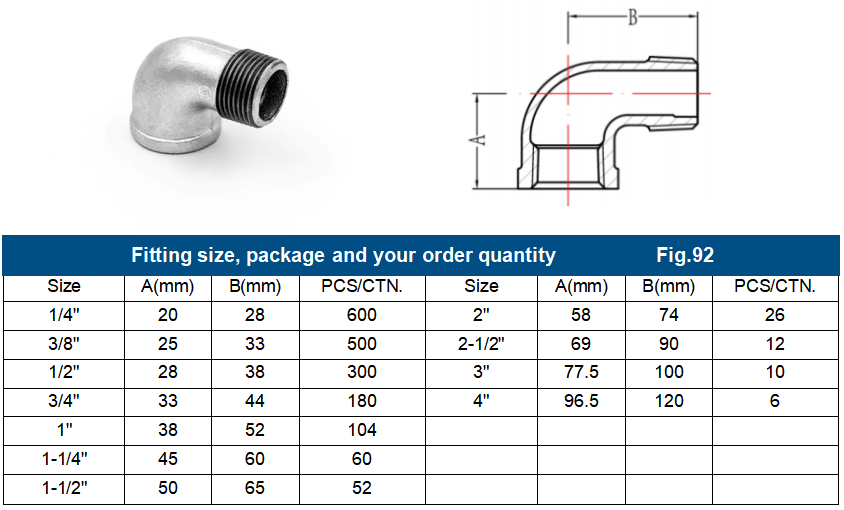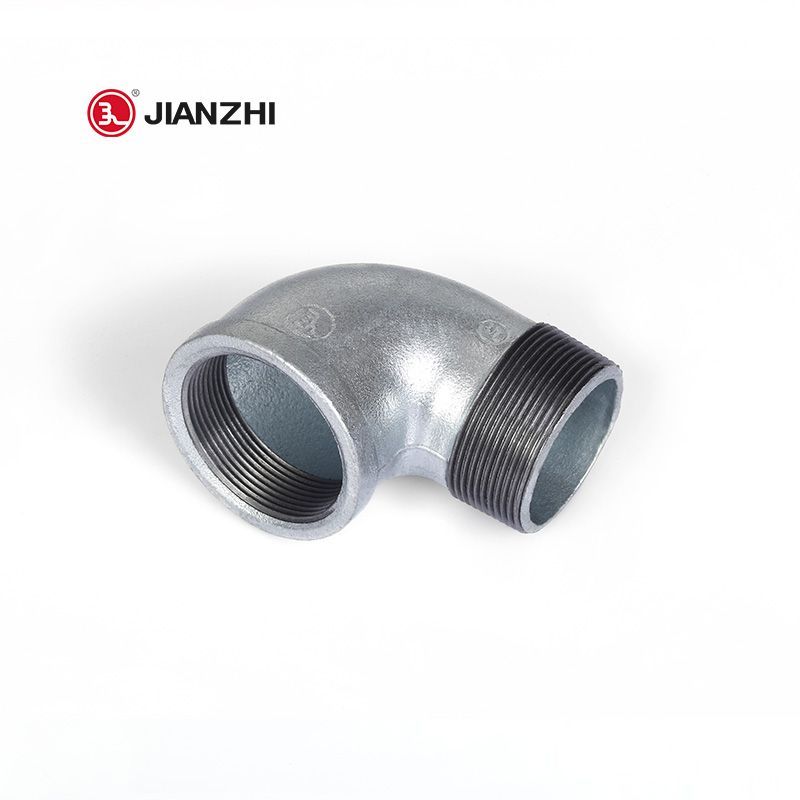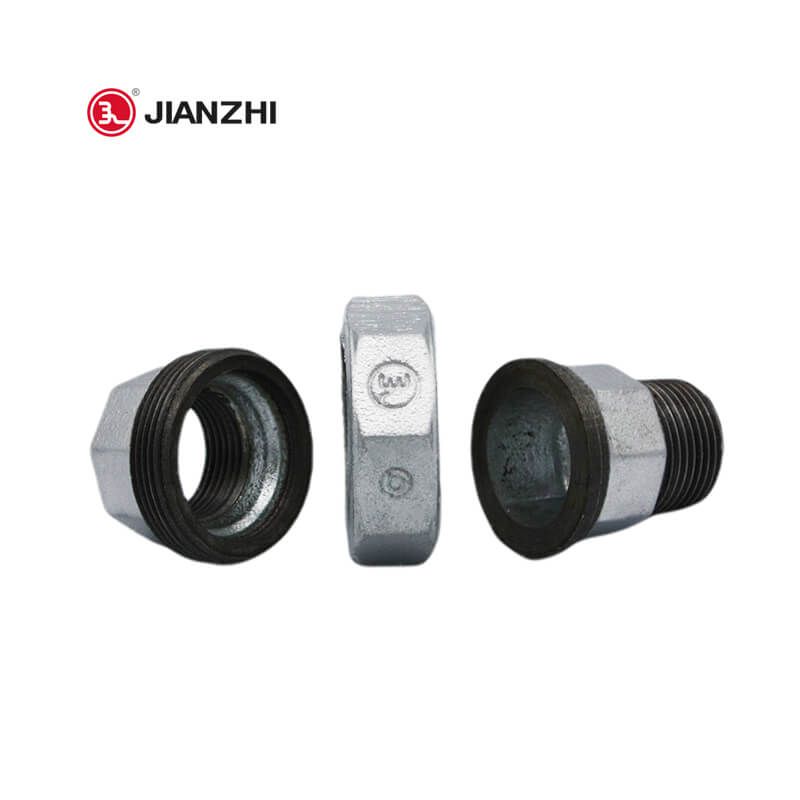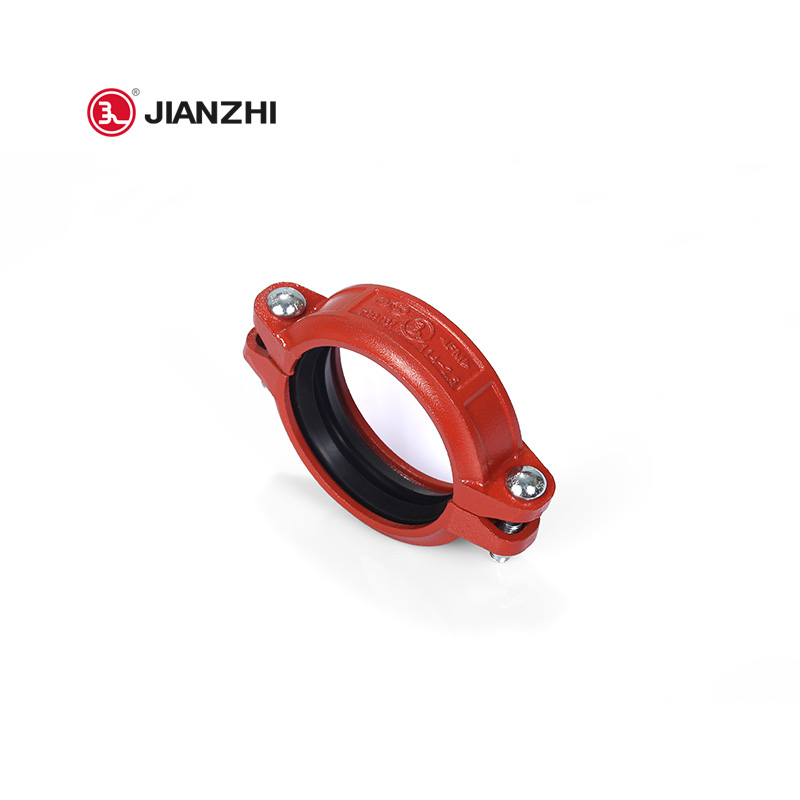Many factors are involved in selecting piping and piping materials. Designers should approach these decisions and determine the advantages and disadvantages of various piping materials and connection methods.
Today we will discuss together on the following topics.
Understand the advantages and disadvantages of various piping materials.
Become familiar with some of the issues associated with material compatibility.
Understand corrosion issues in circulating and domestic piping systems.
The piping material chosen depends on the application and water quality. For example, heating systems typically use steel pipe because of its low cost, high strength and heat resistance, while pure water systems may use pure polypropylene (PP) or polyvinylidene fluoride (PVDF) pipe.
Basic material characteristics
Steel is strong, rigid and has a low coefficient of thermal expansion. It is also heavy (may require multiple workers to transport) and prone to corrosion. It is sometimes referred to as carbon steel or black steel to distinguish it from stainless steel and galvanized steel. By definition, all steel contains carbon.
Steel is often used in closed loop systems because it is inexpensive, especially compared to other materials used in high pressure systems, and because corrosion is relatively easy to control in these systems. It is also a good choice for steam and steam condensing systems because it can handle high temperatures and pressures well, and corrosion in steam piping is usually not a problem. However, corrosion is a problem in steam condensate piping, and many engineers specify 80-gauge steel simply because the corrosion time is about twice that of 40-gauge pipe.
Condensate pipes can last the life of the building if amines (usually cyclohexylamine, morpholine or diethyl ethanolamine (DEAE)) are properly added to neutralize the pH of the condensate pipe. Some building owners do not want these chemicals in the steam for humidification because of health concerns; however, not using these amines may require replacing stainless steel (SS) piping or adding a separate "clean steam" system for humidification and medical device sterilization.
Rigidity is important because it determines the distance between hangers. Steel tubing is available in 21-foot lengths, and hanger spacing can be very wide for large diameter tubing. However, more flexible materials may require hangers closer to 4-foot centers or even continuous hangers. For more information on hangers and hanger spacing, refer to ANSI/MSS SP-58: Pipe Hangers and Supports - Materials, Design, Fabrication, Selection, Application and Installation.
The low coefficient of thermal expansion minimizes the need for expansion loops and expansion joints. However, the high stiffness of steel means that although it expands less, it exerts a very high force on the anchor.
Galvanized steel pipe is a steel pipe immersed in a pool of zinc (see Figure 1). Galvanizing has two methods of reducing corrosion.
It is applied to the surface like a paint and in most cases it forms a very adherent oxide layer like aluminum and stainless steel.
It provides a sacrificial anode (zinc) to accept corrosion instead of steel corrosion.
Galvanized steel pipe has all the advantages of steel pipe and offers higher corrosion resistance in most environments, although at a slightly higher cost. Galvanizing works almost perfectly in applications where it is regularly wetted and dried (e.g., road signs and guardrails). It can fail in environments with high sodium content (e.g., very hard softened water at first) because the sodium causes the adhering oxide film to peel off and react like steel pipe where the oxide peels off. If galvanized pipe is being welded, the welder needs to be careful to grind down to raw steel. Repairing the galvanizing inside the pipe is difficult or impossible. If continuous galvanizing is required internally, consider a mechanical coupling. (More information is available through the American Galvanizing Association.)
Copper pipe is typically used for hydronic and domestic applications, especially 2 in. and smaller pipe sizes. However, some contractors recommend copper in lieu of galvanized steel domestic plumbing in sizes up to 6 in. sizes, especially in the Midwest. Copper is an expensive material, but has the advantage of being lighter in weight than steel and may require fewer employees to install, depending on weight and union restrictions. In addition, copper is typically more expensive and more resistant to corrosion than steel or galvanized steel.
In the HVAC industry, most copper is L-type (medium thickness) hard (tempered) copper, although underground soft (annealed) copper is usually K-type (thick). Drainage, wastewater and discharge (DWV) piping is thinner (Type M).
Stainless steel is widely considered to be resistant to all corrosion. This is true in many cases, but not all. Anaerobic and chloride corrosion can affect SS. the most common alloy is 304 SS, which adds 18% chromium and 8% nickel to the steel. 304L reduces the carbon content to minimize the tendency of SS to corrode at the weld seam. SS with the L designation is recommended for all SS that will be welded and may have corrosion problems, such as fume exhaust and some piping systems. 316 and 316L add molybdenum to reduce susceptibility to chlorides.
Over the past decade, we have seen thinner stainless steels proposed as an alternative to galvanized steel pipe and large diameter copper pipe, primarily for domestic drinking water piping. If not done properly, a problem can arise (see "Mixing materials can be a problem").
SS requires some oxygen to form an adherent oxide layer, just like aluminum wheels. This is not usually a problem in recirculating heating/cooling systems or domestic water systems, but oxygen levels in large chilled water storage systems can become low enough to create problems with microbially influenced corrosion (called MIC).
There are many grades of SS. In general, 300 series alloys are the most corrosion resistant and non-magnetic. 400 series are harder, more wear resistant, can withstand higher temperatures and are magnetic. 200 series alloys are used in sinks and in applications with less acceptable corrosion resistance.
Cast Iron (CI) is used primarily in sewer and storm water systems. It has very good corrosion resistance in these applications. The disadvantage is that the most common joints are not restrained. Most cast iron joints are either push-in or hubless. Push-in joints work very well underground, where soil pressure helps prevent the pipe from moving. Above ground, however, there is a risk that the pipe could separate if a blockage occurs and the pressure becomes too high. Galvanized steel, mainly used in storm systems with mechanical joints or plastic bonded pipes, can be specified when pressures may cause a flood risk.
Ductile Iron (DI) is similar to cast iron, except that it has a lower carbon content and has annealed and/or additives, such as magnesium, to form a different (spherical) matrix. This makes it stronger and more ductile than cast iron. Its corrosion resistance is very similar to that of cast iron.DI is commonly used in municipal water pipes. For storm sewers or sanitary sewers, a section of DI pipe can be specified to pass under the foundation so that if the structure settles, the pipe will bend without breaking.
Duriron is almost off the market, but it may be seen in retrofit projects. It is cast iron with silicon added to protect against corrosion. It was previously used in laboratory waste systems. The "shiny" cast iron duct vent on the roof is Duriron, and today it is often replaced with polypropylene (PP), polyvinylidene fluoride (PVDF) or occasionally borosilicate glass.
Polyvinyl chloride (PVC) piping is commonly used in residential applications and is becoming more popular in commercial/industrial applications. It has the advantage of being very resistant to most corrosion, but is not resistant to solvents or certain oils. Some manufacturers use polyol ester (POE) oil to clean HVAC coils and in some cases can cause PVC condensate drains to rupture. Chlorinated polyvinyl chloride (CPVC) and acrylonitrile butadiene styrene (ABS) are also highly incompatible with POE oils.
One problem with PVC and CPVC is that they contain chlorine. When chlorine burns, it produces mustard gas. Although chlorine gas emitted from burning pipes in buildings did not cause deaths, they did read at least one article about a burning PVC copier that killed a firefighter. The biggest concern with PVC is that the hanger spacing is too small to meet the 25/50 flame spread/smoke development rating building materials of NFPA 255: Standard Test Method for Surface Burning Characteristics of Building Materials and ASTM E84: Standard Test Method for Surface Burning Characteristics, which building codes require for materials located in return air chambers. This is also true for polypropylene and most CPVC formulations.
CPVC is basically PVC with cross-linked chlorine molecules added to give it higher temperature resistance. One disadvantage of PVC, CPVC, and most plastic and some fiber-reinforced plastic (FRP) piping systems is that they have very short radius fittings, so they have a higher pressure drop coefficient.
Polypropylene is known as olefin in the carpet industry and is used for indoor/outdoor carpeting. PP has the advantage of being able to handle fluids up to 210°F and is very resistant to corrosion. Some companies use it for acidic waste and (in additive-free form) for pure water systems. It is also used in some dairy waste lines where 210°F water may be run down the drain to remove curdled cheese. In general, PP is the most corrosion resistant of all materials except PVDF and other Teflon derivatives.
Polyvinylidene fluoride (PVDF) is a fluoropolymer related to polytetrafluoroethylene. It is expensive, but offers excellent performance. It can withstand 212°F fluids, has a 25/50 flame spread/smoke development rating through return air chambers (and is used in city bus linings because it doesn't burn like other plastics), and is very inert (i.e., it can be used in the highest purity water labs or microchip systems).
PEX (polyethylene cross-linked) piping has become very popular, especially in residential plumbing systems. It is a clear, flexible ducting material, and some formulations meet the 25/50 flame/smoke requirement for location in return air chambers. It is very flexible and requires frequent or continuous support.
Borosilicate glass was once a popular material for laboratory waste ducting. It has high corrosion resistance, but is expensive and can be problematic if very hot water is poured down the drain. It is not typically used in modern laboratories.
FRP is suitable for applications that require corrosion resistance, ultraviolet (UV) resistance and higher rigidity than plastic. It has different corrosion resistance and strength properties depending on the plastic and fibers used and how the fibers are oriented. Many products allow a variety of internal coating options to resist specific chemicals. Cooling tower ducting is an excellent HVAC application, provided the product has low loss factor fittings.
Joining Methods
Welding is an old and reliable technique. It basically involves melting pipes together. Steel and polypropylene are used in this method. Welding can be used for galvanized steel, but it is almost impossible to repair the zinc coating inside the pipe, so mechanical joining is preferred.
Threading involves screwing the pipes together, usually with a female threaded joint between the two male threaded sections of the pipe. Threads are typically used for steel pipe and galvanized steel pipe. Some plastic pipe is also common. It is used for SS, but requires fresh molds and anaerobic pipe compound to make a sealed joint. Threaded joints can withstand forces in all directions.
Flanged is expensive, but practically foolproof. Flanged couplings can withstand any pressure required and can be dielectric to minimize corrosion (see Figure 2).
Mechanical couplings (see Figure 3) can withstand forces in all directions and can also withstand any required pressure. Today, we see a trend toward shop-welded assemblies connected in the field by mechanical couplings or systems with fully mechanical couplings with major dimensions of 2 inches or more. Both rigid and flexible couplings are available. Some projects also include vertical risers that benefit from the linear flexibility of "flexible" couplings to avoid expansion joints or increased shaft size offset to prevent pipe breakage due to shear forces at the inflexible shaft wall. Depending on the geometry and vibration isolation of the pump or equipment, flexible mechanical couplings can also be used as an alternative to flexible connections.
Corrosion
It is important to address corrosion issues in piping systems. Typically, circulating heating or cooling systems use corrosion inhibitors and possibly biocides. Nitrite and molybdate are the most common corrosion inhibitors. Some design houses specify molybdate only for chilled water systems, but it allows the use of molybdate or nitrite in hot water systems that raise the water temperature above 140°F in the winter. This is because in cold water, nitrite can be food for microorganisms; microbial "blooms" can occur in chilled water systems.
Add a separate inhibitor to protect the "yellow metal", such as copper. In glycol systems, most suppliers use phosphate corrosion inhibitors because it also meets FDA regulations for food-grade products, so they only have to produce one product for both food-grade and non-food-grade glycols.
However, at least one supplier uses nitrates, so each owner must keep track of what is in their building. No data are available on the effectiveness of semi-nitrate and semi-phosphate treatments; mixing glycol with different chemical inhibitors is not recommended. Systems containing glycol must maintain a glycol concentration between 18% and 25%. Sources vary, but no manufacturer sells premixed glycols at concentrations below 20%; it is recommended not to go below 25%.
If this is not done, microorganisms may multiply rapidly because glycol is food. Glycol is an alcohol, just like wine making, and it is not until the concentration becomes toxic that microorganisms will multiply. Never connect domestic make-up water to a glycol system, otherwise the concentration will slowly drop until a major problem occurs. It is recommended to use a feed tank with premixed industrial (non-automotive) glycol, pressure switch and pump.
Steel is relatively uncorrosive if it is in a high pH environment (e.g., reinforcing steel in concrete). pH scale is logarithmic, usually between 0 and 14. It indicates the acidity or alkalinity of the solution, with 0 indicating the most acidic and 14 the most alkaline. pH of 7 indicates neutrality. pH range of 8 to 10.5 is typically used for piping systems containing steel. However, steel will corrode if the pH is low or if individual chemicals attack the steel. Many corrosion protection schemes rely on high pH values, but this is a problem for systems that include boilers with aluminum heat exchangers because aluminum is not compatible with high pH values. The combination of steel tubes and aluminum heat exchangers requires a very narrow pH range in circulating systems, typically 8 to 8.5.
Surface condensation is another problem. In the Midwest, PEX or other plastic piping materials are not typically insulated in some systems because condensation does not form. However, from an energy standpoint, PEX dissipates heat faster than copper pipe. This is because the larger outside diameter of PEX provides a larger surface area for heat transfer.
Dielectric fittings are controversial today. Dielectric flanges are usually the preferred dielectric fitting because if a dielectric flange is specified and the contractor installs a non-dielectric flange, the only correction is to install a plastic bolt isolation insert - no flange replacement is required. Today, however, NFPA 70: National Electrical Code (NEC) requires bonding of metallic domestic water piping, which destroys the dielectric isolation provided by dielectric flanges, fittings and possibly joints.
Carefully consider the materials you specify for your piping system.




